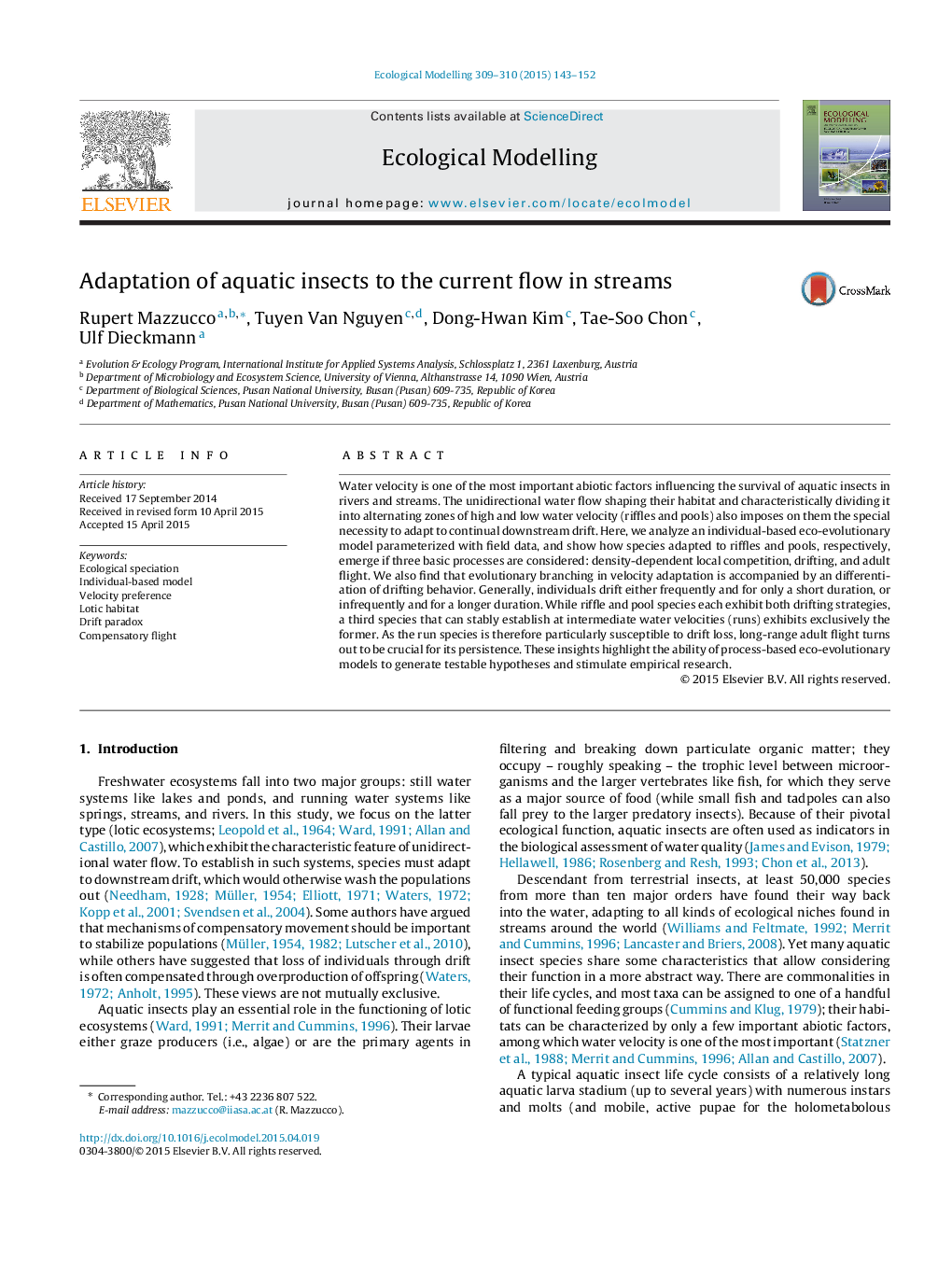| کد مقاله | کد نشریه | سال انتشار | مقاله انگلیسی | نسخه تمام متن |
|---|---|---|---|---|
| 4375683 | 1617437 | 2015 | 10 صفحه PDF | دانلود رایگان |
• Eco-evolutionary models generate communities with realistic ecotype distributions.
• Two distinct drifting strategies emerge (frequent-and-short, infrequent-and-long).
• Run zones are only populated by frequent-and-short drifters.
• Rare long-distance adult flight is required for species establishment in run zones.
Water velocity is one of the most important abiotic factors influencing the survival of aquatic insects in rivers and streams. The unidirectional water flow shaping their habitat and characteristically dividing it into alternating zones of high and low water velocity (riffles and pools) also imposes on them the special necessity to adapt to continual downstream drift. Here, we analyze an individual-based eco-evolutionary model parameterized with field data, and show how species adapted to riffles and pools, respectively, emerge if three basic processes are considered: density-dependent local competition, drifting, and adult flight. We also find that evolutionary branching in velocity adaptation is accompanied by an differentiation of drifting behavior. Generally, individuals drift either frequently and for only a short duration, or infrequently and for a longer duration. While riffle and pool species each exhibit both drifting strategies, a third species that can stably establish at intermediate water velocities (runs) exhibits exclusively the former. As the run species is therefore particularly susceptible to drift loss, long-range adult flight turns out to be crucial for its persistence. These insights highlight the ability of process-based eco-evolutionary models to generate testable hypotheses and stimulate empirical research.
Journal: Ecological Modelling - Volumes 309–310, 10–24 August 2015, Pages 143–152
